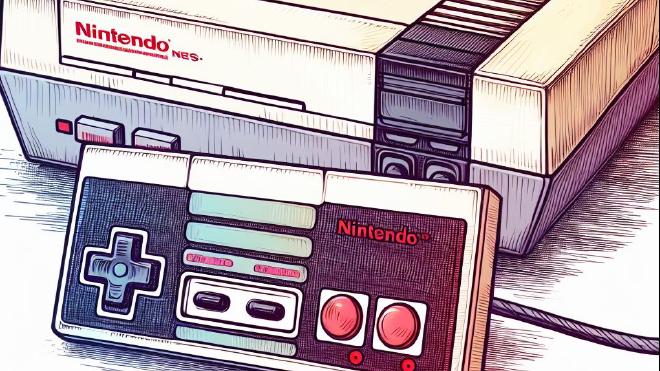Nintendo's Legacy

Table of Contents
Nintendo - This article is part of a series.
Welcome to the expansive universe of Nintendo, where the journey from crafting playing cards in 1889 to conquering the gaming world is as rich and detailed as a Zelda quest.
Introduction: The Dawn of Playful Pioneering #
In the late 19th century, Fusajiro Yamauchi laid the foundation for Nintendo’s path, beginning with the art of playing cards. However, it wasn’t until the 1960s that the company wholeheartedly embraced the gaming realm. Nintendo’s early years, characterized by the creation of hanafuda cards with a touch of elegance, set the stage for a future dominated by pixels and a spirit of playfulness.

Early Years: The Origin Quest Unveiled #
Nintendo’s journey as a playing card company began in Kyoto, Japan. In the culturally vibrant late 1800s, Fusajiro Yamauchi embarked on a humble venture, crafting hanafuda cards. Adorned with vibrant designs inspired by Japanese traditions, these cards swiftly captured the public’s attention. However, when Nintendo made its foray into the gaming industry in the 1960s, it faced skepticism and hurdles in gaining traction beyond the borders of Japan.
Game & Watch: The Pixel Odyssey Begins #
As the 1970s dawned, Nintendo set sail on the pixelated seas with the creation of Game & Watch. These pocket-sized marvels, introduced in 1980, weren’t just gadgets; they were a technological revelation. The brainchild of Gunpei Yokoi, a key figure in Nintendo’s evolution, Game & Watch became a cultural phenomenon, boasting a variety of titles that captivated players worldwide. However, not every venture was a guaranteed success, and Nintendo did experience some commercial missteps along the way.
Home Consoles: The NES Revolution #
Fast forward to the tumultuous era of the late ’70s and early ’80s, where Atari reigned supreme in the gaming kingdom. Nintendo, facing stiff competition, rolled out the Nintendo Entertainment System (NES) in 1983. This 8-bit revolutionary console transformed the gaming landscape, introducing classics like “Super Mario Bros.” and “The Legend of Zelda,” and establishing the D-pad as a gaming standard. However, the gaming industry crash of 1983 left a lasting impact, affecting the entire market, Nintendo included.

Innovations: From Wii-mote to Labo Magic #
Stepping into the 21st century, Nintendo kept reshaping the gaming scene. In 2006, they dropped the Wii console, bringing in motion control technology that turned living rooms into interactive playgrounds. The Wii-mote became a cultural hit, making gaming a family event. More recently, Nintendo took a shot at virtual reality with the Labo line, showing a commitment to blending innovation with the joy of play. However, not every innovation got a standing ovation, with some critics questioning the long-term success of certain ideas.
Beloved Characters: Mario, Link, and the Power-Ups #
In the ’80s, Nintendo hit its creative peak with the introduction of two legendary characters: Mario and Link. Super Mario Bros., hitting the scene in 1985, was more than just a game—it was an interactive celebration. The mustached plumber, brought to life by Shigeru Miyamoto, turned into a pop culture sensation, opening the door to a lineup of cherished characters, power-ups, and adventures in the Nintendo universe. Despite the success, Nintendo caught some heat for its strict licensing policies, leaving some developers feeling a bit boxed in.
Impact on Pop Culture and Society: Nintendo’s Cultural Conquest #
Nintendo isn’t just a gaming giant; it’s a cultural journey. Their dedication to fun and innovation has given rise to a community of creatives, drawing inspiration from Mario’s adventures, Link’s strategy, and Nintendo’s sense of togetherness. From indie game developers to artists and entrepreneurs, the Nintendo legacy weaves through the diverse fabric of pop culture. However, like any big player, Nintendo has had its share of controversies, including concerns around representation and workplace culture.

The Ever-Expanding Legacy #
Closing the chapter on this journey through Nintendo’s history leaves us in awe of a legacy that started with playing cards and grew into a global gaming empire. Nintendo’s commitment to fun, creativity, and excellence has not only provided entertainment but has also become an integral part of gaming culture. Moving forward, as the company embraces innovation and evolution, the legacy it has built assures us that it will continue captivating generations, ensuring that the joy of play remains an enduring adventure.
Nintendo’s Product Timeline #
-
Game & Watch Series (1980-1991): Nintendo’s foray into handheld gaming began with the Game & Watch series. These pocket-sized devices featured single-screen gameplay and introduced iconic titles like “Ball” and “Donkey Kong.”
-
Nintendo Entertainment System (NES, 1983): The NES revolutionized home gaming, introducing classics such as “Super Mario Bros.,” “The Legend of Zelda,” and the concept of the D-pad controller.
-
Game Boy (1989): Portable gaming reached new heights with the release of the Game Boy. With titles like “Tetris” and “Pokémon,” the handheld console became a cultural phenomenon.
-
Super Nintendo Entertainment System (SNES, 1990): The SNES built on the success of the NES, offering enhanced graphics and iconic games like “Super Mario World” and “The Legend of Zelda: A Link to the Past.”
-
Nintendo 64 (N64, 1996): Nintendo entered the realm of 3D gaming with the N64, featuring classics like “Super Mario 64” and “The Legend of Zelda: Ocarina of Time.”
-
Game Boy Color (1998): A colorful upgrade to the Game Boy, the Game Boy Color introduced a vibrant gaming experience with titles like “Pokémon Gold” and “Silver.”
-
Game Boy Advance (GBA, 2001): The GBA brought 32-bit gaming to handhelds, offering a diverse library including “The Legend of Zelda: A Link to the Past & Four Swords” and “Metroid Fusion.”
-
Nintendo GameCube (2001): The GameCube introduced a mini-disc format and showcased titles like “Super Smash Bros. Melee” and “The Legend of Zelda: The Wind Waker.”
-
Nintendo DS (2004): Dual screens and touch functionality defined the Nintendo DS, with hits like “New Super Mario Bros.” and “Brain Age.”
-
Wii (2006): Nintendo revolutionized motion gaming with the Wii, featuring titles like “Wii Sports” and “Super Mario Galaxy.”
-
Nintendo 3DS (2011): The 3DS brought glasses-free 3D gaming to handhelds, offering experiences like “The Legend of Zelda: Ocarina of Time 3D” and “Pokémon X & Y.”
-
Wii U (2012): The Wii U introduced the GamePad and showcased titles like “Super Mario 3D World” and “The Legend of Zelda: Breath of the Wild.”
-
Nintendo Switch (2017): Combining home and portable gaming, the Switch has become a versatile platform with hits like “The Legend of Zelda: Breath of the Wild,” “Super Mario Odyssey,” and “Animal Crossing: New Horizons.”